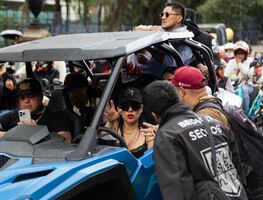Más Información

Honestidad es vivir con coherencia entre lo que se piensa y se hace, asegura Sheinbaum; "no es solo decir la verdad", afirma

En una hora y 38 minutos se definió la política de seguridad México-EU; así fue la visita de Marco Rubio a Palacio Nacional

EU incauta 13 mil barriles de químicos para drogas que iban de China a México; serían para el Cártel de Sinaloa

Döring denuncia ante FGR a Andy López Beltrán y 7 morenistas más; acusa delitos de huachicol fiscal y crimen organizado
Mexican government has said that a drug cartel murdered the 43 students of Ayotzinapa and burned their bodies at a trash dump in Cocutla.
In the article “'Burning bodies' experiment casts doubt on fate of missing Mexican students” published in Science, José Torero, a fire scientist at the University of Queensland, St. Lucia, in Brisbane, Australia, says his latest experiments rule out the government’s explanation once and for all.
Using pig carcasses as a proxy for human bodies, José Torero incinerated up to four pigs at a time and determined that the inferno necessary to consume 43 bodies could not have occurred at the dump.
“José knows what he’s doing,” says John Lentini, an independent fire investigator in Islamorada, Florida, who wasn’t involved in the research but has participated in other high-profile cases. “It doesn’t make any sense that you can make 43 people disappear like that.”
Torero, born in Peru and trained at the University of California, Berkeley, has investigated many high-profile fires, including those that brought down the Twin Towers. The cartel members had testified that they incinerated the bodies on a pyre of wood and tires in the open air. Torero’s calculations suggested that fully incinerating 43 bodies in the manner the cartel described would have required a staggering amount of wood: between 20,000 and 40,000 kilograms.
He also doubted that it would be possible to nearly eliminate organic matter from the remains with an open-air fire, rather than with a furnace. And when he visited the Cocula dump in July 2015, he saw no evidence of a massive fire. He concluded that it was impossible the students had been burned there.









